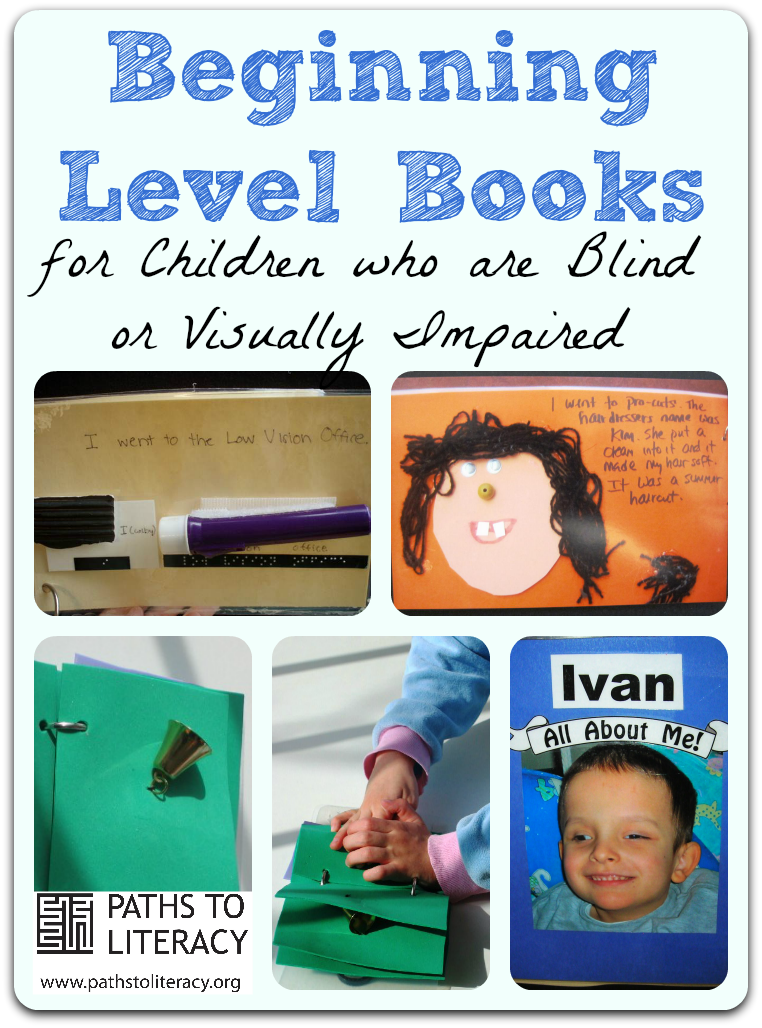Beginning Level Books for Children Who Are Blind or Visually Impaired
Children who are blind or visually impaired need to have access to books, just as other children do. Because they may not be able to see the illustrations and print, however, books will need to be adapted or modified in order for the experience to be meaningful and pleasurable. While the ideas below are helpful for all children who are blind or visually impaired, these suggestions are specifically designed for very young children or for students with multiple disabilities.
Object Books
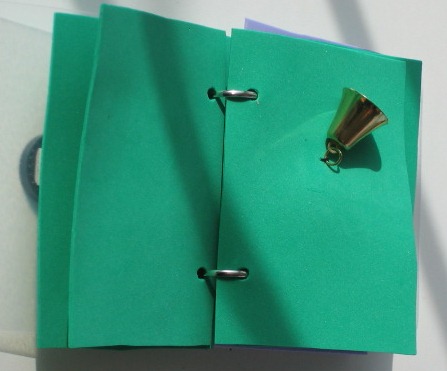
Object books are a wonderful way to create a bridge between real objects and books. Many children who are blind or visually impaired have limited experience touching and handling real objects, and this can be a great way to learn about them. Books can be created using actual objects from a routine, such as “My Book about Bath Time” with an object associated with bath time attached to each page. This might include a bar of soap on one page, shampoo on one page, a rubber duck or other bath toy on one page, a wash cloth on one page, a bathtub stopper on a chain, a towel, etc.
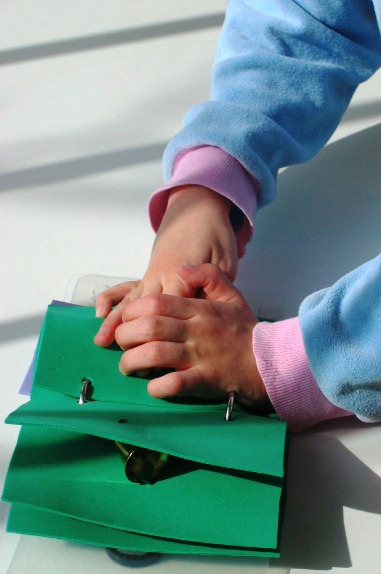
Objects can be attached in various ways. If you are using whole objects that are fairly large, it might be best to use small baggies attached to each page and place the object inside the baggie. The child can then help to turn the page and take the object out, telling what it is and showing how it is used.
Similar types of books can be made for various routines or events, with the actual objects on the pages or in bags.
For more ideas, see Making Object Books by MaryAnn Demchak, Nevada Dual Sensory Impairment Project.
Experience Books
Experience stories are another way to create meaningful stories with children who are blind or visually impaired with additional disabilities, or who are just beginning to explore books. With experience stories, students discuss events or activities after they have taken place and their words are used to write a book about their experience. This may be a daily experience, similar to the routines described above, or they may be special events, such as a trip to a restaurant, a birthday party, or a day at the beach.
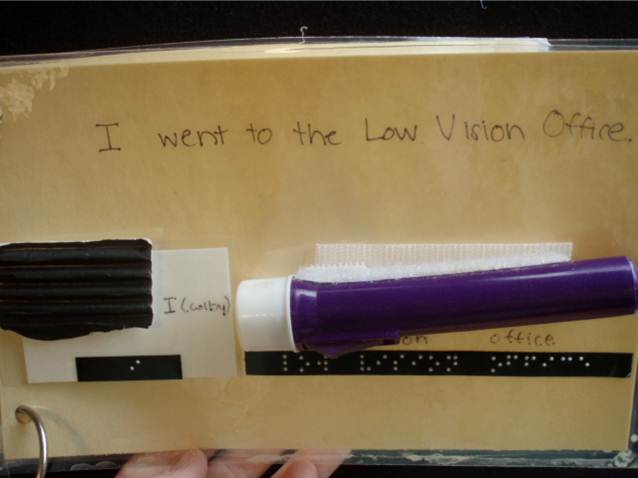
General tips in creating experience books:
- When choosing tactile items to attach to a page, be sure to think about it from the child's perspective. For a child with limited vision and other disabilities, it is important to select real items or pieces of items that a child has touched as part of the experience. In other words, a raised line drawing to represent a tree is less meaningful than a piece of bark. Cotton balls do not represent clouds to a child who is blind, but rather leaves or a handful of grass may be a better way to represent being outside. Similarly, a matchbox car is visually similar to a real car, but will have no meaning to a child who is blind with additional disabilities. A better way to represent a car may be the buckle of a seat belt or part of a car seat.
- Include print and braille on every page, even if the child is totally blind. This is important for other people who are reading the book, and will help to give the child continued exposure.
- Have the child participate as much as possible in the creation of the book, including choosing the topic, telling the story, selecting the items to "illustrate" it, and attaching the items to the pages.
Read more about Experience Books.
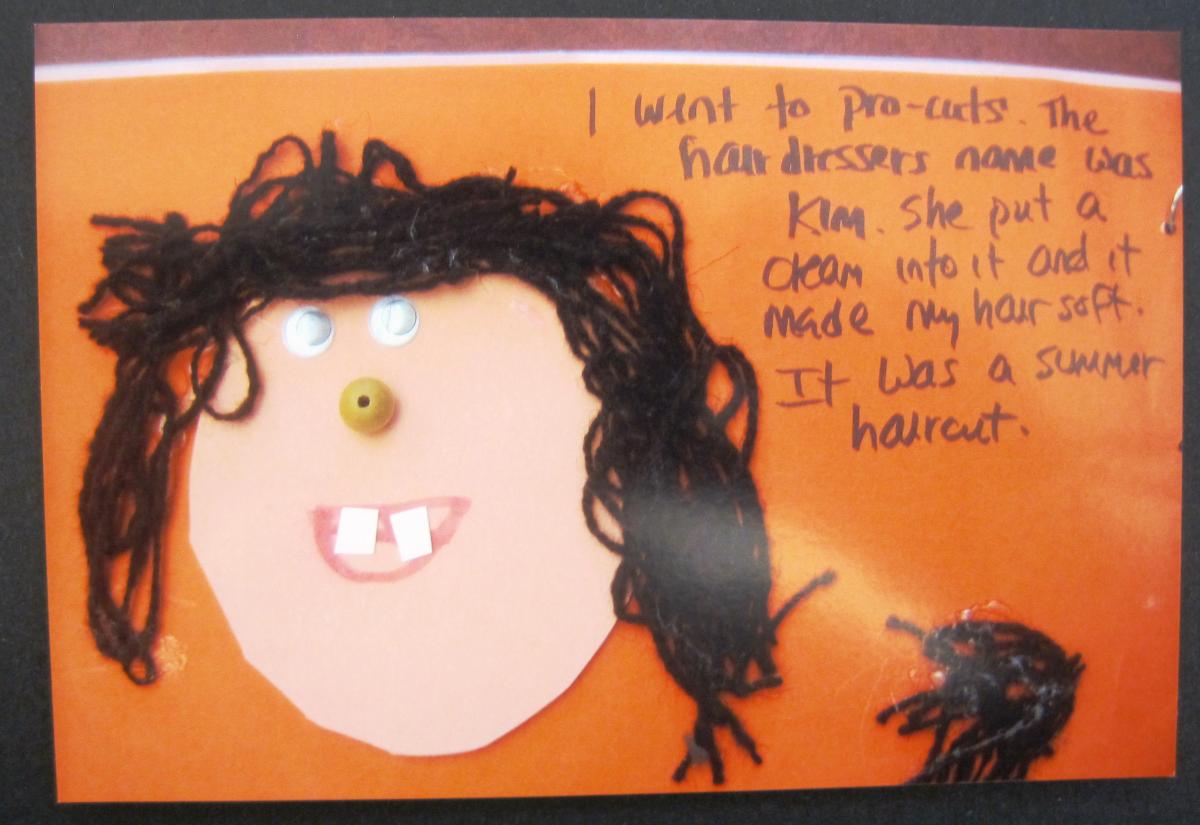
Tactile Journals
With tactile journals, students may make regular entries on a daily or weekly basis, rather than staying with a single theme, such as a field trip, throughout the book. They can dictate or write the pages, and use a wide variety of tactile materials to tell the story about what happened.
Read more about Tactile Journals.
All About Me Books

"All About Me" books introduce a child and tell basic information about his or her family and life. Pages may include photos of the child, family members, and friends, textures, with print and braille text throughout. Read more.
Read more about this topic in other parts of this site! Books for Students with Multiple Disabilities
